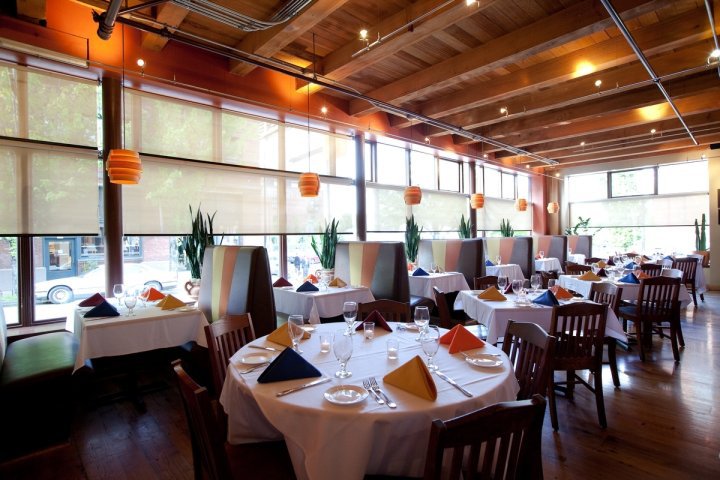How can chili peppers – hot, spicy, and flavorful – connect two cultures thousands of miles apart? Traveling nearly 4900 miles, the Ají pepper has redefined local.

Founded in 2002, Andina Restaurant connects Peru and Portland to introduce a new generation of diners to a cuisine that has a long and storied history. Peter Platt, his mother, Doris Rodrigues de Platt, and his father, John, consider their restaurant a culinary embassy for Peru.
How local is local?
Peter Platt thinks local within a global network.
Challenged with running an ethnic restaurant that is closely tied to ingredients that can’t be purchased locally, Peter struggled to find the foods he needed and to source them in a sustainable manner.
As we see it, sustainability is about connectivity, about tracing the links between food communities, where our food comes from.
Whether it’s vegetables from the farm down the road, a wine produced and bottled in France or Italy, a special cheese from Switzerland, or – as in our case, – Ají, hot chili peppers, from Peru.
They are certain key ingredients that cannot be grown in other parts of the world and they’re embedded in a local culture in a local climate.
To me a sustainable enterprise makes connections and breaks down barriers between cultures.

The solution for Peter and his restaurant was to create his own supply chain between north and south. A friend and third-generation German/Peruvian farmer south of Lima grows four varieties of Ají chili peppers for Andina. These peppers contribute essential flavors to Peruvian cuisine and are necessary to Andina’s offering.
The farmer grows them, processes them into purées and pastes, vacuum packs them, and ships them by container on a cargo ship to Seattle. From Seattle they are brought by truck to Portland and put in cold storage for use as needed.
Food connects people and cultures together. Food is an immediate access to another culture; you don’t have to travel there, you don’t have to speak the language, you can get a sense of what it might be like to be in Peru by just eating the food.
We need to expand our definition of sustainability in the food business and not be so focused on how the food is grown – organic or not – or where it is grown – obsessing about food miles.
Sustainability is also about the preservation of traditions that have a long history, that are rooted worldwide. As a country of immigrants we are better for having those stories as part of our own cultural background.
How local is local?
Local is more than eating food grown within a specific radius; for example, in Puget Sound – a temperate rain forest – the historic “foodshed” was limited to the native peoples’ diet of fish, shellfish, wild game, small fruit and berries, nuts and roots.
Local is also about connecting food to the people who grow it and giving a face to the farmer or fisherman. Peter and his family have linked the diners in their restaurant to a farmer in Peru; a meal bought and eaten in Portland keeps a farm in Peru active, vital, and successful.
________________________________________
Additional resources:
Avoiding the Local Trap: Scale and Food Systems in Planning Research (2006), Branden Born and Mark Purcell, University of Washington, published in the Journal of Planning Education and Research
Traditional Foods of Puget Sound (2010), Elise Krohn and Valerie Segrest, University of Washington, Northwest Indian College, Cooperative Extension Office

Great article. It is indeed necessary to sometimes go to the source. Were it not for that source the cuisine of the culture couldn’t and wouldn’t be introduced to the world in the first place. How else can we gain insight into others and the places they live and or come from except through their foods. Food is what connects us to place. It also lets others know who we are because of those connections. God Bless. Keep up the good work
Paul